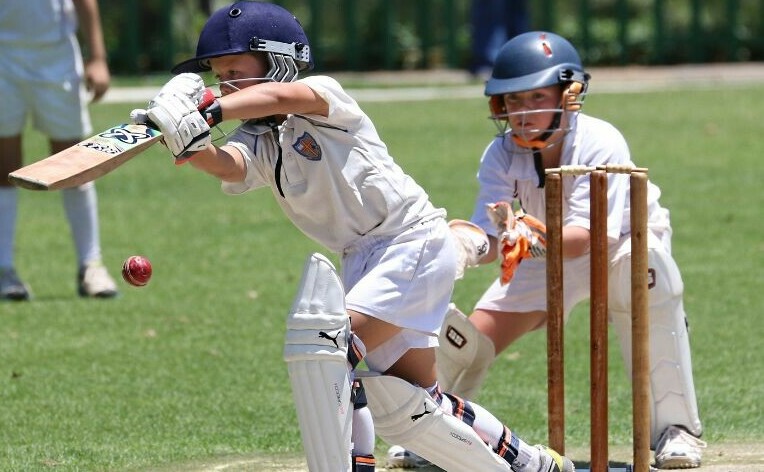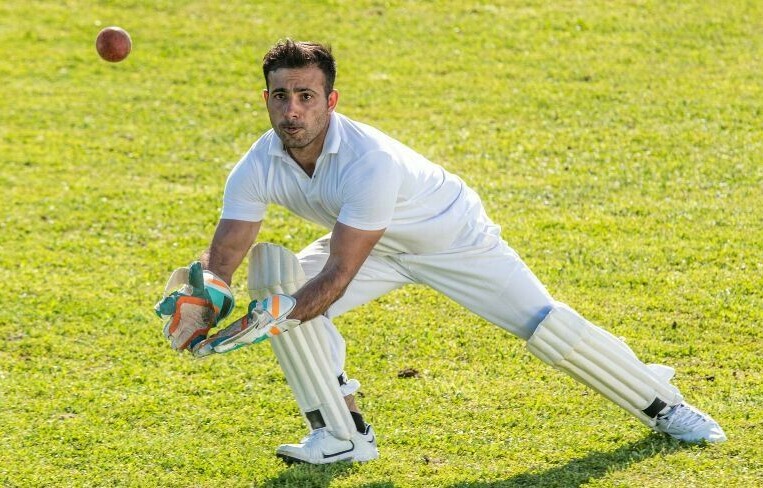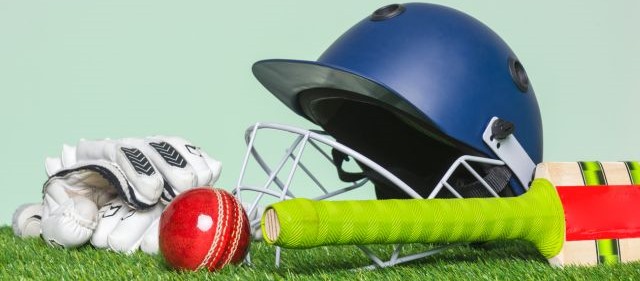Cricket is a sport that is deeply entrenched in tradition and technique. Central to the essence of cricket is the equipment wielded by players, which not only ensures their safety but also impacts their performance on the field. For aspiring cricketers, understanding the significance of appropriate gear is paramount as they embark on their cricketing journey. In the following guide we’ll list out and explain the essential cricket gear all cricketers require.

Absolute Must Have Cricket Gear
A cricketer must have a cricket bat. Standing at the batting crease, facing down a fast bowler without a cricket bat is, obviously, ridiculous. What are you going to do? Kick the ball away? So, a cricket bat is first on the list. And therefore, finding the right cricket bat for you is essential, and something we’ll discuss in a post later dedicated to that one topic.
So, first … a cricket bat.
The next most essential piece of gear, for a batter at least, can be one of three things. Leg pads, helmet or a groin protector, commonly known as a box. Whichever one protects the most important body part from your point of view, is the most important, and I’ll let you figure that one out.
Cricket pads should be large enough to cover your shins and continue above the knee, but not so cumbersome that you can’t run. A helmet should be comfortable and fit your head precisely. Too small or too big, and the helmet won’t protect your head like it should. The helmet shouldn’t be too heavy and offer good ventilation, as it gets very hot under the lid.
We’ll talk more about getting the right helmet in a later post.
And thirdly, is the box. Make sure it’s the right size. If it’s too small, you could find that pinching in all the wrong places, especially if you get hit there.
A yes, even female cricketers wear a groin protector. Getting hit in the groin hurts women as well as men, guys. That’s not a men-only domain.
After those three things, you want to make sure you have the right gloves. Batting gloves protect the hands from getting struck by the ball, obviously, but they also protect hands against the great vibration that comes when ball hits bat. It is important that the gloves you buy fit, and also that if you are left handed, you get left-handed gloves, because the left thumb for left-handers, and the right-thumb for right handers has extra padding, as it is the thumb most likely to be hit.
We’ll talk more about gloves in a later post.
Now, shoes … shoes are also vitally important. Depending on the surface you are playing on, you will need different types of shoes. If playing on turf pitches, you will need shoes with spikes or studs in the soles, to give you proper traction. Bowlers, in particular, need to ensure their shoes have the proper traction, as they put a great amount of pressure into the bowling stride, and a bowler not comfortable with the traction their shoes provide will soon end up with a sprained ankle, or far worse.
Naturally, we’ll talk more about finding the right shoes later on, too.
Nice-to-have Cricket Gear
Cricket has a lot of different types of gear designed to protect the body against 145 kilometre an hour thunderbolts. If you are facing 145 kilometre an hour thunderbolts, everything that follows would also be considered ‘Absolute Must Have Cricket Gear’.
But if you’re just beginning your cricketing journey in the junior ranks, or you’re playing the local D-grade competition where sculling a beer at the end of the over is considered just one of the things you do, then perhaps you might decline to wear a few of these.
Most of the gear in this section relates to covering up other body parts.
Chest guards: make sure they cover your chest. For obvious biological reasons, females may require larger chest guards than men. The chest guard shouldn’t slip, or interrupt your ability to play shots or run.
But they should also stop you getting to hurt if you get hit in the chest. Obviously.
Forearm guards: If you are batting right-handed, the left forearm guard is the one most important, as it is the one closest to the bowler. If you’re left-handed, it’s the right arm. Once attached, make sure the forearm guard stays in place. You don’t want it slipping down when you are doing a swashbuckling cover drive.
Thigh guards: Cricket pads do not cover the entire leg. Thigh pads go above the cricket pads to protect the thigh. Like all other safety equipment, the perfect thigh guard allows you to still run and play the game the way you want to, while at the same time being protective enough to do their job properly.

Wicketkeeping Gear
Wicketkeeping is a specialized position in cricket that requires a unique set of skills and equipment. Among the essential gear for wicketkeepers, gloves and pads play a crucial role in providing protection, while still allowing the player to perform at their optimum.
Wicketkeeping Gloves: Wicketkeeping gloves are designed to offer maximum protection to the hands while ensuring flexibility and grip to catch the ball effectively. These gloves are heavily padded on the palms, fingers, and backhand to absorb the impact of the ball and prevent injuries.
The ends of the fingers have cylindrical caps to protect the tips of your fingers, and at the wrist, there are padded cuffs; both of these features protect you from injury when the ball doesn’t land right in the middle of your gloves.
And each glove wouldn’t be complete with webbing between the thumb and the first finger, although new rules have limited the amount of webbing that can be included here, as previously, gloves had full webbing and acted almost like baseball gloves..
We’ll talk more about wicketkeeping gloves in a later post.
Wicketkeeping Pads: Pads for wicketkeepers are different to the pads batsmen wear. Batting pads are thicker, larger, offering robust protection to the batter’s shins and knees. But wicket keeping pads are lighter, slimmer and more flexible, allowing the wicketkeeper to move in all directions very quickly.
Conclusion
Cricketers require a lot of gear, and for a parent preparing their child for their first games of cricket, this can be daunting. And expensive. Just note, not all gear is required, and junior cricket clubs often have their own kit bag with pads, gloves, cricket bats and the like.
But for some gear, it is best not to skimp corners. A helmet needs to keep your head protected, and a cheap and nasty one will not do you any favours if you get hit.
Do you have any cricket gear stories of your own? Have you ever gone out to bat and forgot your gloves, or bat … or box? Comment below and tells us your stories.

